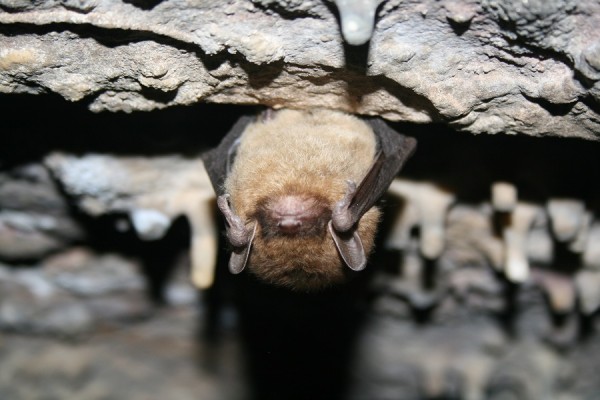By Ana Verayo, | April 02, 2016

The Little Brown Bat of Washington could be in danger of the deadly white nose syndrome.
For the first time ever, a highly contagious and dangerous bat disease known as white nose syndrome was detected in a Northwest bat in Washington, which poses a grave threat to all flying mammal species in the state that can reach to different regions of the United States.
Like Us on Facebook
This small, brown bat was found by hikers on a trail earlier this March, some 30 miles from eastern Seattle. The bat was infected by this pathogenic fungus that apparently already wiped out a whopping number of 6 million bats in North America, according to the Center for Biological Diversity.
According to senior scientists from the Center, Mollie Matteson, this is definitely a wake up call for forest and land managers in the Western states to step up and implement preventive and protective measures from this bat disease becoming a pandemic across bat populations. Matteson adds, it is shocking and disturbing to know that this disease already took hold of Washington and into the western United States.
When the hikers found that the bat was alive, it was also too weak to fly, deciding it was best to take the animal to a PAWS shelter. The bat died inside the cage a couple days later. Washington's Department of Fish & Wildlife sent the bat to the U.S. Geological Survey's National Wildlife Health Center in Wisconsin as scientists confirmed that the bat suffered from white nose syndrome.
This fatal disease already resulted in great population declines among several bat species that includes the Indiana bat, the northern long eared bat, the tricolored bat and the little brown bat. Wildlife biologists now say that this is the worst wildlife crisis in past years, that can result in 100 percent mortality rate in bats dwelling in infected caves. To date, there is no known cure for the disease.
The first detection of the pathogenic fungus in the Western U.S. was confirmed some 1,250 miles away in Nebraska, according to wildlife biologist Jeremy Coleman. Scientists believe that this fungus was transported via gear or shoes of spelunkers and miners in the mountainous regions. Matteson adds, this can possibly be a human caused transmission.
-
Use of Coronavirus Pandemic Drones Raises Privacy Concerns: Drones Spread Fear, Local Officials Say

-
Coronavirus Hampers The Delivery Of Lockheed Martin F-35 Stealth Fighters For 2020

-
Instagram Speeds Up Plans to Add Account Memorialization Feature Due to COVID-19 Deaths

-
NASA: Perseverance Plans to Bring 'Mars Rock' to Earth in 2031

-
600 Dead And 3,000 In The Hospital as Iranians Believed Drinking High-Concentrations of Alcohol Can Cure The Coronavirus

-
600 Dead And 3,000 In The Hospital as Iranians Believed Drinking High-Concentrations of Alcohol Can Cure The Coronavirus

-
COVID-19: Doctors, Nurses Use Virtual Reality to Learn New Skills in Treating Coronavirus Patients







